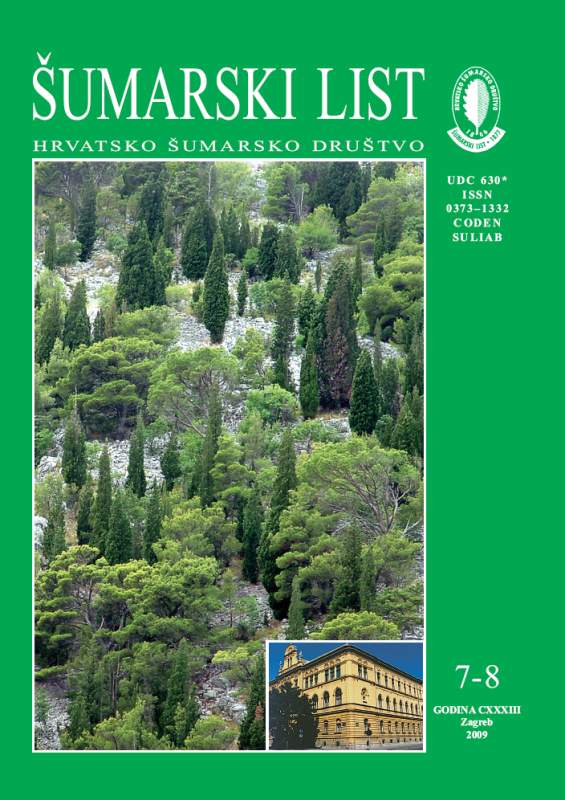| |
| RIJEČ GLAVNOGA UREDNIKA |
| |
|
|
| Branimir Prpić | |
| MORE ABOUT FORESTS AND NATURE PROTECTIONIN RELATION TO NATURA 2000 IN CROATIA
pdf
HR
EN
|
368 |
| |
| IZVORNI ZNANSTVENI ČLANCI |
| |
|
|
| Vedriš,M., A.Jazbec, M.Frntić, M.Božić, E.Goršić | UDK 630* 529 (001) |
| Precision of Structure Elements’ Estimation in a Beech – Fir Stand Depending on Circular Sample Plot Size
pdf
HR
EN
|
369 |
| Matošević,D., M.Pernek, T.Dubravac, B.Barić | UDK 630* 453 (001) |
| Research of Leafminers onWoody Plants in Croatia
pdf
HR
EN
|
381 |
| Dubravac,T., S.Dekanić | UDK 630* 423 (001) |
| Structure and Dynamics of the Harvest of Dead and Declining Trees of Pedunculate Oak in the Stands of Spačva Forest from 1996 to 2006
pdf
HR
EN
|
391 |
| Godina, K. | UDK 630* 569 (001) |
| Development Structure Elements in Mixed Oak Stands in Aria of ForestAdministration Bjelovar with Retrospect on Modelling Growth andYield of Mixed Stands
pdf
HR
EN
|
407 |
| Cerovečki, Z. | UDK 630* 188 (001) |
| Beech Forests and Milava –As.Calamagrosti arundinaceae-Fagetum(Ht. 1950) Cerovečki ass. nov. of the Mountain of West Croatia
pdf
HR
EN
|
417 |
Summary: In the border area between the continental and littoral beech forests, according to I. Horvat (1962) the beech forests with the reed grass described as.Calamagrosti arundinaceae-Fagetum(Ht. 1950)Cerovečki ass.novaare developed. The association is divided into two subassociations, the more thermophilous one (caricetosum albae) and the more mesophilous one (abietetosum albae). The subassociation with the white reed comprises the pure beech forests, which on Obruč from the physiognomic point of view are found as two different types. One type includes the normally developed high-value economic forests coverig considerable areas of that region, and the forests of the stunted looking beech, limited to the extended plateau under the cliff to the northeast from the highest peak of Obruč. The latter type has developed under the influence of the specific climatic conditins and the characteristic massif orography. Generally, the area of Obruč, Pakleno, Crni vrh and Sljeme is specific with respect to the climatic phenomena and phytogeographical belonging. The beech and reed grass forests grow in the said area on the moderately inclined slopes and plateaus above rendzinas or moderately deep and soils between the blocks of rock.
The forests of the as. Calamagrosti arundinaceae-Fagetumhave been classified into the allianceAremonio-Fagion, the order Fagetalia sylvaticae and the classQuerco-Fagetea.
|
| |
| STRUČNI ČLANCI |
| |
|
|
| Pašičko,R., D.Kajba, J.Domac | UDK 630* 425 (biomasa–Biomass) |
| Impacts of EmissionTrading Markets on Competitiveness of Forestry Biomass in Croatia
pdf
HR
EN
|
425 |
| Grgurević, D. | UDK 630* 272 (Cactaceae) |
| Succulents (fat plants) on theAdriatic Coast and their Use in Parks
pdf
HR
EN
|
439 |



